RBS 2011 Annual Report Download - page 119
Download and view the complete annual report
Please find page 119 of the 2011 RBS annual report below. You can navigate through the pages in the report by either clicking on the pages listed below, or by using the keyword search tool below to find specific information within the annual report.-
 1
1 -
 2
2 -
 3
3 -
 4
4 -
 5
5 -
 6
6 -
 7
7 -
 8
8 -
 9
9 -
 10
10 -
 11
11 -
 12
12 -
 13
13 -
 14
14 -
 15
15 -
 16
16 -
 17
17 -
 18
18 -
 19
19 -
 20
20 -
 21
21 -
 22
22 -
 23
23 -
 24
24 -
 25
25 -
 26
26 -
 27
27 -
 28
28 -
 29
29 -
 30
30 -
 31
31 -
 32
32 -
 33
33 -
 34
34 -
 35
35 -
 36
36 -
 37
37 -
 38
38 -
 39
39 -
 40
40 -
 41
41 -
 42
42 -
 43
43 -
 44
44 -
 45
45 -
 46
46 -
 47
47 -
 48
48 -
 49
49 -
 50
50 -
 51
51 -
 52
52 -
 53
53 -
 54
54 -
 55
55 -
 56
56 -
 57
57 -
 58
58 -
 59
59 -
 60
60 -
 61
61 -
 62
62 -
 63
63 -
 64
64 -
 65
65 -
 66
66 -
 67
67 -
 68
68 -
 69
69 -
 70
70 -
 71
71 -
 72
72 -
 73
73 -
 74
74 -
 75
75 -
 76
76 -
 77
77 -
 78
78 -
 79
79 -
 80
80 -
 81
81 -
 82
82 -
 83
83 -
 84
84 -
 85
85 -
 86
86 -
 87
87 -
 88
88 -
 89
89 -
 90
90 -
 91
91 -
 92
92 -
 93
93 -
 94
94 -
 95
95 -
 96
96 -
 97
97 -
 98
98 -
 99
99 -
 100
100 -
 101
101 -
 102
102 -
 103
103 -
 104
104 -
 105
105 -
 106
106 -
 107
107 -
 108
108 -
 109
109 -
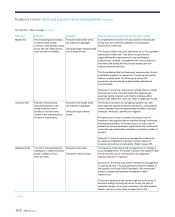 110
110 -
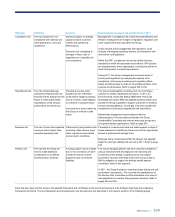 111
111 -
 112
112 -
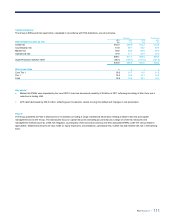 113
113 -
 114
114 -
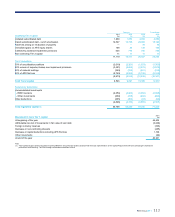 115
115 -
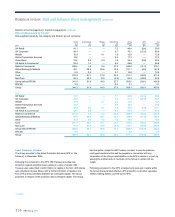 116
116 -
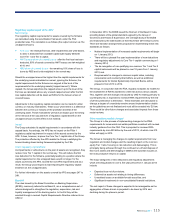 117
117 -
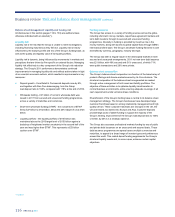 118
118 -
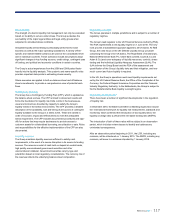 119
119 -
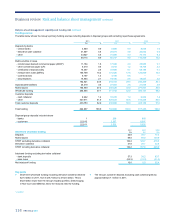 120
120 -
 121
121 -
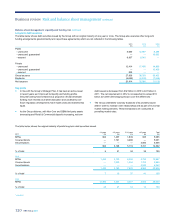 122
122 -
 123
123 -
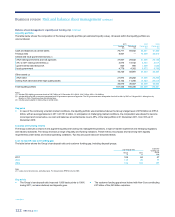 124
124 -
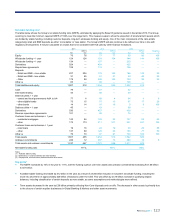 125
125 -
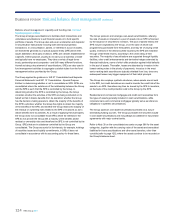 126
126 -
 127
127 -
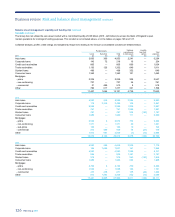 128
128 -
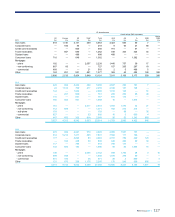 129
129 -
 130
130 -
 131
131 -
 132
132 -
 133
133 -
 134
134 -
 135
135 -
 136
136 -
 137
137 -
 138
138 -
 139
139 -
 140
140 -
 141
141 -
 142
142 -
 143
143 -
 144
144 -
 145
145 -
 146
146 -
 147
147 -
 148
148 -
 149
149 -
 150
150 -
 151
151 -
 152
152 -
 153
153 -
 154
154 -
 155
155 -
 156
156 -
 157
157 -
 158
158 -
 159
159 -
 160
160 -
 161
161 -
 162
162 -
 163
163 -
 164
164 -
 165
165 -
 166
166 -
 167
167 -
 168
168 -
 169
169 -
 170
170 -
 171
171 -
 172
172 -
 173
173 -
 174
174 -
 175
175 -
 176
176 -
 177
177 -
 178
178 -
 179
179 -
 180
180 -
 181
181 -
 182
182 -
 183
183 -
 184
184 -
 185
185 -
 186
186 -
 187
187 -
 188
188 -
 189
189 -
 190
190 -
 191
191 -
 192
192 -
 193
193 -
 194
194 -
 195
195 -
 196
196 -
 197
197 -
 198
198 -
 199
199 -
 200
200 -
 201
201 -
 202
202 -
 203
203 -
 204
204 -
 205
205 -
 206
206 -
 207
207 -
 208
208 -
 209
209 -
 210
210 -
 211
211 -
 212
212 -
 213
213 -
 214
214 -
 215
215 -
 216
216 -
 217
217 -
 218
218 -
 219
219 -
 220
220 -
 221
221 -
 222
222 -
 223
223 -
 224
224 -
 225
225 -
 226
226 -
 227
227 -
 228
228 -
 229
229 -
 230
230 -
 231
231 -
 232
232 -
 233
233 -
 234
234 -
 235
235 -
 236
236 -
 237
237 -
 238
238 -
 239
239 -
 240
240 -
 241
241 -
 242
242 -
 243
243 -
 244
244 -
 245
245 -
 246
246 -
 247
247 -
 248
248 -
 249
249 -
 250
250 -
 251
251 -
 252
252 -
 253
253 -
 254
254 -
 255
255 -
 256
256 -
 257
257 -
 258
258 -
 259
259 -
 260
260 -
 261
261 -
 262
262 -
 263
263 -
 264
264 -
 265
265 -
 266
266 -
 267
267 -
 268
268 -
 269
269 -
 270
270 -
 271
271 -
 272
272 -
 273
273 -
 274
274 -
 275
275 -
 276
276 -
 277
277 -
 278
278 -
 279
279 -
 280
280 -
 281
281 -
 282
282 -
 283
283 -
 284
284 -
 285
285 -
 286
286 -
 287
287 -
 288
288 -
 289
289 -
 290
290 -
 291
291 -
 292
292 -
 293
293 -
 294
294 -
 295
295 -
 296
296 -
 297
297 -
 298
298 -
 299
299 -
 300
300 -
 301
301 -
 302
302 -
 303
303 -
 304
304 -
 305
305 -
 306
306 -
 307
307 -
 308
308 -
 309
309 -
 310
310 -
 311
311 -
 312
312 -
 313
313 -
 314
314 -
 315
315 -
 316
316 -
 317
317 -
 318
318 -
 319
319 -
 320
320 -
 321
321 -
 322
322 -
 323
323 -
 324
324 -
 325
325 -
 326
326 -
 327
327 -
 328
328 -
 329
329 -
 330
330 -
 331
331 -
 332
332 -
 333
333 -
 334
334 -
 335
335 -
 336
336 -
 337
337 -
 338
338 -
 339
339 -
 340
340 -
 341
341 -
 342
342 -
 343
343 -
 344
344 -
 345
345 -
 346
346 -
 347
347 -
 348
348 -
 349
349 -
 350
350 -
 351
351 -
 352
352 -
 353
353 -
 354
354 -
 355
355 -
 356
356 -
 357
357 -
 358
358 -
 359
359 -
 360
360 -
 361
361 -
 362
362 -
 363
363 -
 364
364 -
 365
365 -
 366
366 -
 367
367 -
 368
368 -
 369
369 -
 370
370 -
 371
371 -
 372
372 -
 373
373 -
 374
374 -
 375
375 -
 376
376 -
 377
377 -
 378
378 -
 379
379 -
 380
380 -
 381
381 -
 382
382 -
 383
383 -
 384
384 -
 385
385 -
 386
386 -
 387
387 -
 388
388 -
 389
389 -
 390
390 -
 391
391 -
 392
392 -
 393
393 -
 394
394 -
 395
395 -
 396
396 -
 397
397 -
 398
398 -
 399
399 -
 400
400 -
 401
401 -
 402
402 -
 403
403 -
 404
404 -
 405
405 -
 406
406 -
 407
407 -
 408
408 -
 409
409 -
 410
410 -
 411
411 -
 412
412 -
 413
413 -
 414
414 -
 415
415 -
 416
416 -
 417
417 -
 418
418 -
 419
419 -
 420
420 -
 421
421 -
 422
422 -
 423
423 -
 424
424 -
 425
425 -
 426
426 -
 427
427 -
 428
428 -
 429
429 -
 430
430 -
 431
431 -
 432
432 -
 433
433 -
 434
434 -
 435
435 -
 436
436 -
 437
437 -
 438
438 -
 439
439 -
 440
440 -
 441
441 -
 442
442 -
 443
443 -
 444
444 -
 445
445 -
 446
446 -
 447
447 -
 448
448 -
 449
449 -
 450
450 -
 451
451 -
 452
452 -
 453
453 -
 454
454 -
 455
455 -
 456
456 -
 457
457 -
 458
458 -
 459
459 -
 460
460 -
 461
461 -
 462
462 -
 463
463 -
 464
464 -
 465
465 -
 466
466 -
 467
467 -
 468
468 -
 469
469 -
 470
470 -
 471
471 -
 472
472 -
 473
473 -
 474
474 -
 475
475 -
 476
476 -
 477
477 -
 478
478 -
 479
479 -
 480
480 -
 481
481 -
 482
482 -
 483
483 -
 484
484 -
 485
485 -
 486
486 -
 487
487 -
 488
488 -
 489
489 -
 490
490
 |
 |

RBS Group 2011 117
Stress testing
The strength of a bank’s liquidity risk management can only be evaluated
based on its ability to survive under stress. The Group evaluates the
survivability of the major legal entities and legal entity groups when
subjected to simulated stress conditions.
Simulated liquidity stress testing is periodically performed for each
business as well as the major operating subsidiaries. A variety of firm-
specific and market-related scenarios are used at the consolidated level
and in individual countries. These scenarios include assumptions about
significant changes in key funding sources, credit ratings, contingent uses
of funding, and political and economic conditions in certain countries.
The Group’s actual experiences from the 2008 and 2009 period factor
heavily into the liquidity analysis. This systemic and name-specific crisis
provides important data points in estimating stress severity.
Stress scenarios are applied to both on-balance sheet and off-balance
sheet commitments, to provide a comprehensive view of potential cash
flows.
Contingency planning
The Group has a Contingency Funding Plan (CFP), which is updated as
the balance sheet evolves. The CFP is linked to stress test results and
forms the foundation for liquidity risk limits. Limits in the business-as-
usual environment are bounded by capacity to satisfy the Group’s
liquidity needs in the stress environments. The CFP provides a detailed
description of the availability, size and timing of all sources of contingent
liquidity available to the Group in a stress event. These are ranked in
order of economic impact and effectiveness to meet the anticipated
stress requirement. The CFP includes documented procedures and sign-
offs for actions that may require businesses to provide access to
customer assets for collateralised borrowing, securitisation or sale. Roles
and responsibilities for the effective implementation of the CFP are also
documented.
Liquidity reserves
The Group maintains liquidity reserves sufficient to satisfy cash
requirements, in the event of a severe disruption in its access to funding
sources. The reserves consist of cash held on deposit at central banks,
high quality unencumbered government securities and other
unencumbered collateral. Government securities vary by type and
jurisdiction based on local regulatory considerations. The currency mix of
the reserves reflects the underlying balance sheet composition.
Regulatory oversight
The Group operates in multiple jurisdictions and is subject to a number of
regulatory regimes.
The Group’s lead regulator is the UK Financial Services Authority (FSA).
The FSA implemented a new liquidity regime on 1 June 2010. The new
rules provide a standardised approach applied to all UK banks. At RBS
Group, the rules focus on the UK Defined Liquidity Group (a subset
comprising the Group’s five UK banks, The Royal Bank of Scotland plc,
National Westminster Bank Plc, Ulster Bank Limited, Coutts & Co and
Adam & Co) and cover adequacy of liquidity resources, controls, stress
testing and the Individual Liquidity Adequacy Assessment (ILAA). The
ILAA informs the Group Board and the FSA of the assessment and
quantification of the Group’s liquidity risks and their mitigation, and how
much current and future liquidity is required.
In the US, the Group’s operations must meet liquidity requirements set
out by the US Federal Reserve Bank, the Office of the Comptroller of the
Currency, the Federal Deposit Insurance Corporation and the Financial
Industry Regulatory Authority. In the Netherlands, the Group is subject to
the De Nederlandsche Bank liquidity oversight regime.
Regulatory developments*
There have been a number of significant developments in the regulation
of liquidity risk.
In December 2010, the Basel Committee on Banking Supervision issued
the ‘International framework for liquidity risk measurement, standards and
monitoring’ which confirmed the introduction of two liquidity ratios: the
liquidity coverage ratio (LCR) and the net stable funding ratio (NSFR).
The introduction of both of these ratios will be subject to an observation
period, which includes review clauses to identify and address any
unintended consequences.
After an observation period beginning in 2011, the LCR, including any
revisions, will be introduced on 1 January 2015. The NSFR, including any
revisions, will move to a minimum standard by 1 January 2018.
